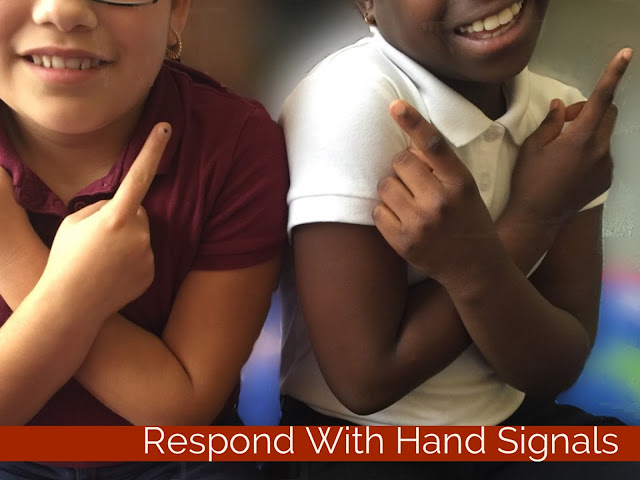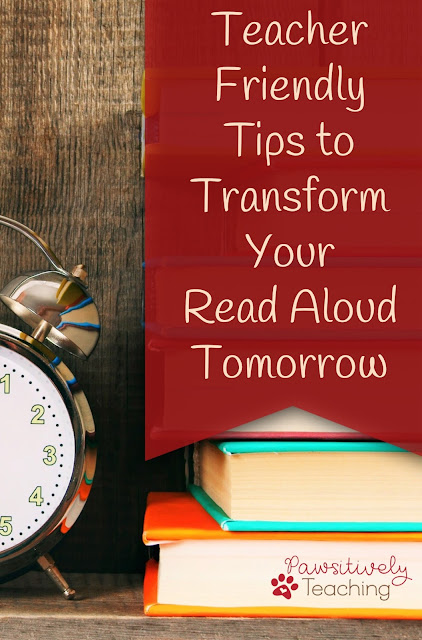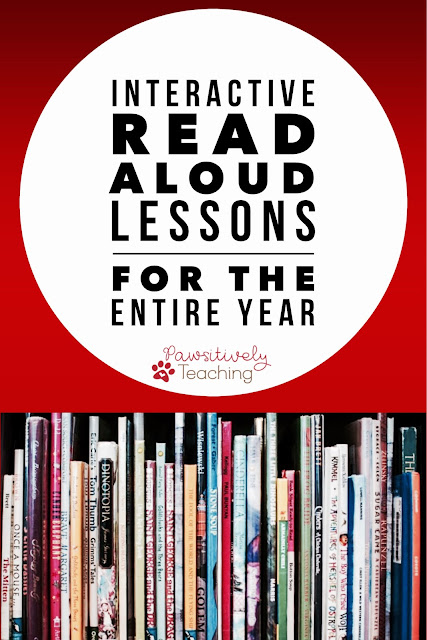The
science is settled when it comes to Interactive Read-Alouds. Not only do
classroom teachers recognize that Interactive Read-Alouds are a powerful and
engaging teaching tool, but the research indicates that they’re undeniably effective
as well.
Need another reason to use Interactive Read-Alouds? They make lesson planning for your Reading Block time a breeze!
In case you’re a little late
to the party, here’s a simple explanation of what an Interactive Read-Aloud is:
Interactive Read-Alouds make the
most of read-aloud time by uniting the elements of comprehension, fluency, and
standards in reading. They provide an easy way for teachers to purposefully and intentionally model and teach a specific reading skill (or many skills at
once). Interactive Read-Alouds provide teachers and students with a format
that includes a proven step-by-step routine for both guided conversations and
reflective thinking about the chosen text. This format enables students to demonstrate
knowledge acquired with strategic listening, discussion, and responding in writing
about the text.
Want to improve the effectiveness
of your read aloud time? Who doesn’t? Interactive Read-Alouds increase student
engagement, increase students' understanding of the text, provide teachers with
the opportunity to model comprehension strategies, teach literary concepts, and
build vocabulary! They cover every reading skill and standard, starting with activating prior knowledge and extending all the way up to a final response to reading! BONUS: They also improve the overall
class climate by building a sense of camaraderie, teamwork, and interdependence
within reading groups!
The following list of Read-Aloud strategies
are a set of ‘tried and true’ teaching tools from my classroom---and many
others, that have proven to successfully help teachers plan an engaging,
lively, and effective Interactive Read-Aloud lesson!
We can all agree that any
lesson that includes kinesthetic elements will be more appealing and engaging
to kids, right? With sign language,
kids can use simple signs for making a connection with the story as they read
(or listen), such as thumbs up or down if they agree or disagree with something
that’s stated in the story. Perhaps you can even have them learn an ASL sign
for certain vocabulary words within the story—a great way to reinforce and
remember a new vocabulary word! Having
kids learn and use the sign for a particular vocabulary word (one that’s
repeated in the story is best) will automatically make them more engaged in
Read-Aloud time. They may need to be reminded to ‘sign’ when you first start
this practice, but eventually they will come to love it!
Incorporating Sign Language into your Interactive Read-Aloud
time will accomplish many important goals:
Noticing who’s paying attention to the story and who’s not
Improving student’s careful and strategic listening
Makes learning new vocabulary & reading time more FUN for kids!
Sometimes called
THINK-PAIR-SHARE, ‘Turn & Talk’ is one of Kagan’s most useful cooperative
learning strategies that’s especially effective for teaching reading. During
and after reading, students will have a chance to think of a question that they
can ask a partner, that will encourage reflective thinking. (You can use
resources that provide question stems for students to make this process flow a
little more smoothly.)
This strategy also helps students to be more interactive and engaged as
they read & listen to a story. They may use post-its or their own notebooks
to stop and jot down important parts of the story. You can also guide them with
a directed list of what to ‘jot about’ at first, such as events in the story or
character traits, for example, or let them decide what’s important for them to
jot down as they go.
As a busy teacher, when you think about incorporating a new teaching method, it can sometimes feel overwhelming and you may feel as though it’s too complicated to make a change. The best part of Interactive Read-Alouds is that they truly do make life easier for you as a teacher--and make reading comprehension more accessible for your students!
As a busy teacher, when you think about incorporating a new teaching method, it can sometimes feel overwhelming and you may feel as though it’s too complicated to make a change. The best part of Interactive Read-Alouds is that they truly do make life easier for you as a teacher--and make reading comprehension more accessible for your students!
Interactive
Read-Alouds take the familiar steps of reading instruction that we already know
as ‘BEFORE, DURING and AFTER Reading’ and transform them into an easy to use, much
more lively (and yes, truly INTERACTIVE!) format for reading instruction! I really
hope that you’ll give it a try, you’ll be so glad you did!
Looking
for a great way to start (or continue!) using Interactive Read-Alouds in your
class? Here’s a phenomenal resource that many teachers have
found extremely helpful!
Looking to give Interactive Read Alouds a try in your classroom?
Want to save or share this helpful info? Just pin one of the images below!


























This is such an informative post! I love the use of sign language during the lesson- I have never thought of doing that. Thank you for sharing the freebie and all of these amazing ideas that I can easily use in my classroom on Monday!
ReplyDelete